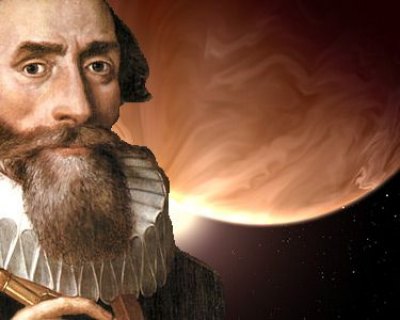
Last week, NASA's Kepler mission received the Smithsonian National Air and Space Museum's highest group honor, the 2015 Trophy for Current Achievement. But long before the Kepler space observatory, there was Johannes Kepler. So who was he? Here is a quick rundown:
Name: Johannes Kepler.
Born: Dec. 27, 1571, in Weil der Stadt in southwestern Germany.
Education: His father was a soldier. His mother saw to his intellectual interests, according to the Stanford Encyclopedia of Philosophy. Kepler was given a scholarship to study for the ministry, but his life took a turn while a student at the University in Tubingen, Germany, in 1588. There, he learned the theories of Nicolaus Copernicus, who died about 28 years before Kepler’s birth. It was Copernicus who had proposed that planets of our solar system revolve around the sun – not the Earth.
Even though Kepler nearly completed a graduate program in theology, he was assigned to teach mathematics at a Lutheran school in Graz, Austria, according to the book, Great Thinkers of the Western World, Ian P. McGreal, editor (Harper Collins; 1992). As put in the book, the appointment “must count as one of the turning points in scientific history.”
On the job: Kepler had few pupils and, left to his own devices, wrote a book essentially defending Copernicus. Great Thinkers points out that Kepler moved the argument forward. “In Copernican astronomy, the sun acted simply as an illuminator; all motion was referred to the center of the Earth’s orbit, near which the sun happens to be located,” the book said. “It was Kepler who made the sun the dynamically active center of the universe.”
Political problems and a professional breakthrough: In 1599 anti-Lutheran agitation forced Kepler to leave Graz, and he visited Tycho Brahe, a Danish astronomer. After Brahe died, Kepler succeeded him as Imperial Mathematician in Prague.
While in Prague, Kepler completed several works, including the Astronomia nova, which includes the first two laws of planetary motion. Kepler had focused on the orbit of Mars. "His ten-year investigation led him to conclude that the orbit of Mars was not a circle but another conic section, an ellipse," according to the Mathematical Association of America.
Personal: Kepler married in 1597, but his wife, Barbara, died in 1611. He moved back to Austria one year later and married a second time in 1613. In 1617 he defended (successfully) his mother, who had been accused of witchcraft, according to the Stanford website. He died in 1630 at Regensburg, Germany.
Quick Study was compiled by YT&T editors using these sources:
- Great Thinkers of the Western World, Ian P. McGreal, editor (Harper Collins; 1992).
- Mathematical Association of America, Johannes Kepler's Astronomia Nova; Frank J. Swetz (Pennsylvania State University, Harrisburg).
- NASA: Johannes Kepler
- Stanford Encyclopedia of Philosophy, Johannes Kepler.
Related:
NASA marks verification of 1,000th planet
The Interstellar question: Could we live there?